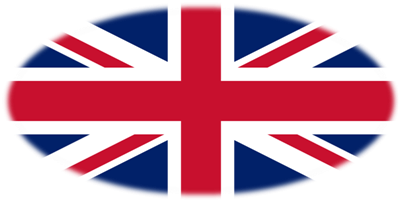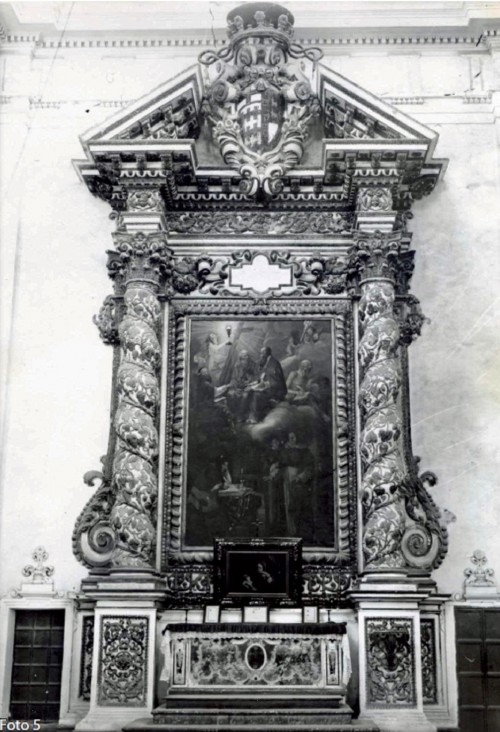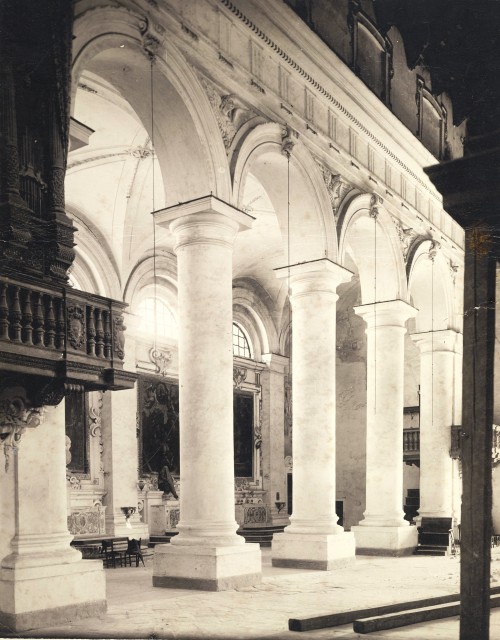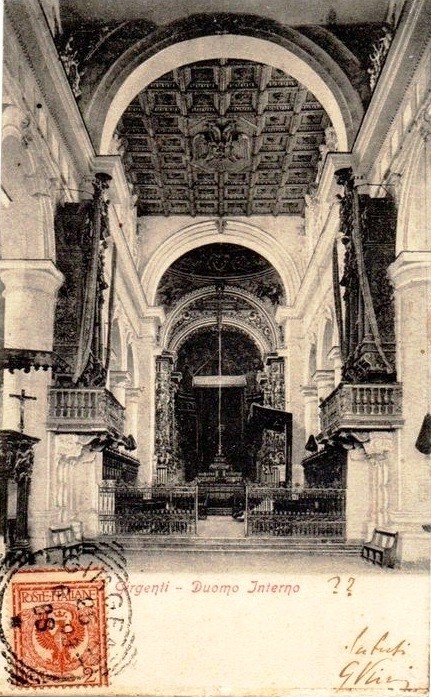Arriva in Diocesi il 20 novembre del 1658. Seppe meritarsi gran lode per la prudenza, lo zelo, la dottrina e l’integrità. Comprò a favore del popolo la gabella (imposta) della farina.
Nella Visita ad Limina del 1662 scrive dello stato totale di degrado della Cattedrale. La sua prima preoccupazione è stata quella di impegnarsi per risanarla e abbellirla. Prolungò la Chiesa inglobando l’antico edificio di S. Gerlando e costruendo il cappellone barocco. La chiesa venne così allungata di 18 metri. Amplio le absidi e fece realizzare due cappelle una dedicata alla Madonna in cornu Evangelii (attualmente altare del santissimo) e l’altra del Santissimo (oggi altare della Madonna) in cornu epistolae.
Agli anni del suo episcopato risalgono il rivestimento in gesso e stucco dei pilastri della navata centrale e la ristrutturazione del presbiterio. Nel 1663 commissiona il nuovo soffitto a cassettoni sopra l’antico coro e arricchisce la Cattedrale di due organi. Il transetto venne chiuso alle estremità con due fastose tribune con colonne tortili edificando l'altare dei Sette Santi Vescovi a nord e l'altare dei Santi Dottori a sud. Le nuove tribune hanno nascosto a nord, la cappella De Marinis e a sud la cappella del 1281 con l’altare dedicato a San Giovanni Battista, Eligio e Nicola.
Incarica Michele Blasco (1628-1685) di adeguare la Cattedrale alle nuove forme barocche dipingendo il catino dell’abside centrale con la raffigurazione del Paradiso, l’arco trionfale con la figura allegorica della Sapienza e la finta cupola e le vele con le quattro virtù cardinali.
Non tutta la ricca decorazione in stucco della Cattedrale è riconducibile al suo operato, bensì il progetto decorativo iniziale, che ripone a ricordo, le armi araldiche del presule. Il progetto decorativo è legato agli scultori Ferraro di Burgio con richiami alla bottega palermitana e allo scultore Giuseppe Palumbo. Poco prima della morte consacrò la Cattedrale all’Immacolata. Il suo monumento sepolcro, che era collocato nel centro dell’abside, dietro l’altare maggiore, con la stua dell?immacolata, durante i restauri degli anni settanta è stato spostato lungo la navata nord.




